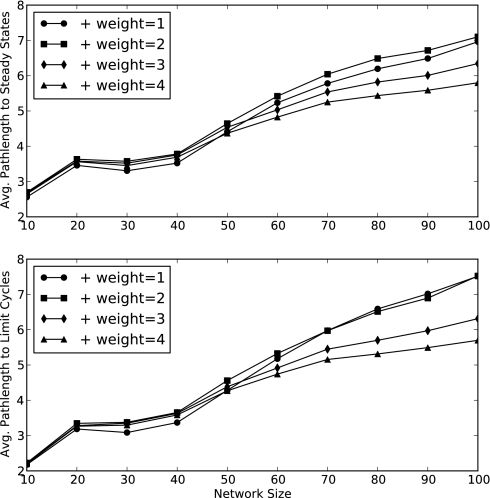Fig. 5.
The average number of time steps required to reach an attractor grows with network size, albeit at a much slower rate than the total size of the state space [the average path length lies in the range (2, 8), whereas the number of states ranges from 210 to 2100]. If the positive edge weight is larger, the greater abundance of attractors (Fig. 3) results in a wider but shallower distribution of transitional states, which leads to a smaller average path length.

